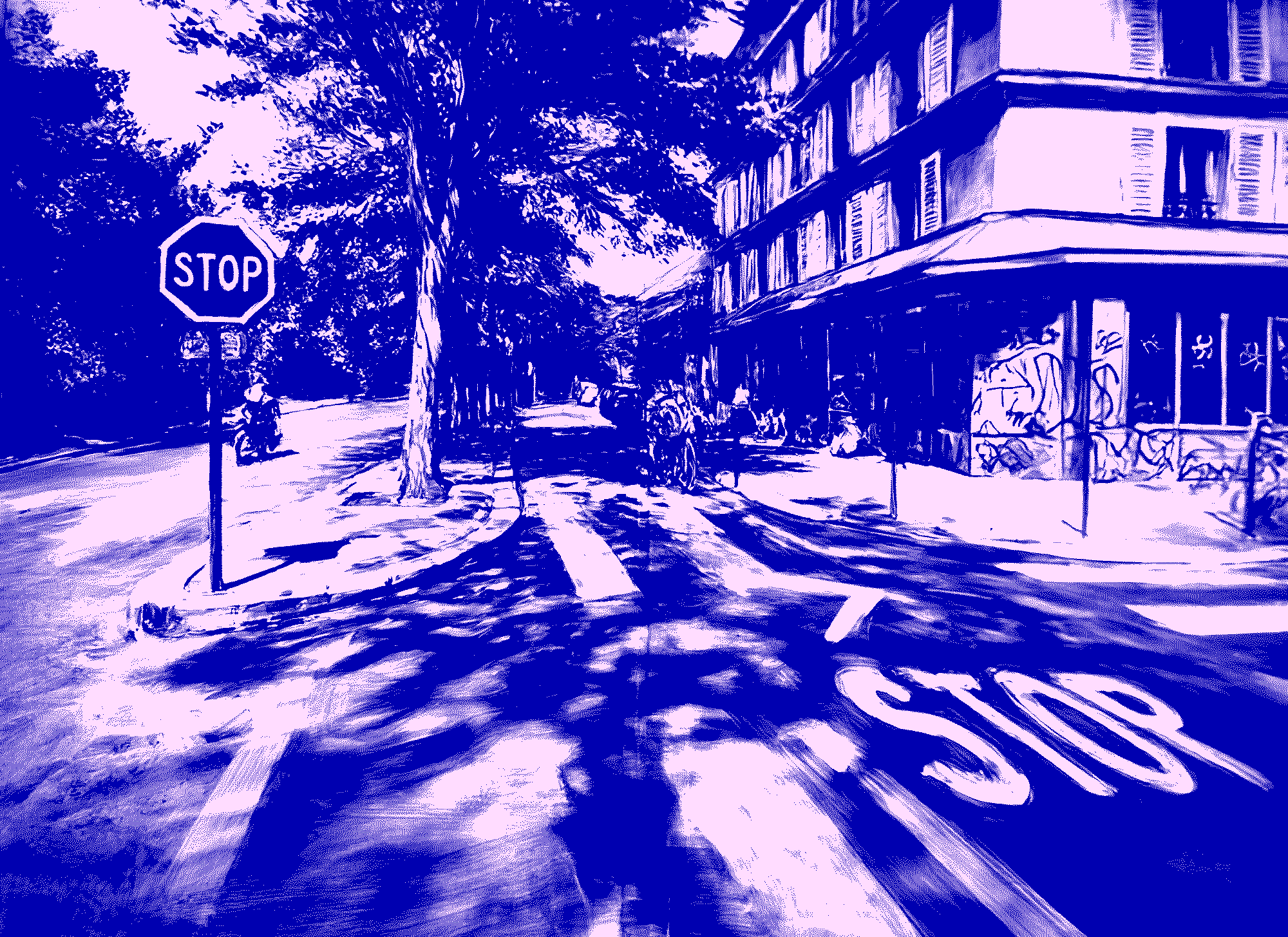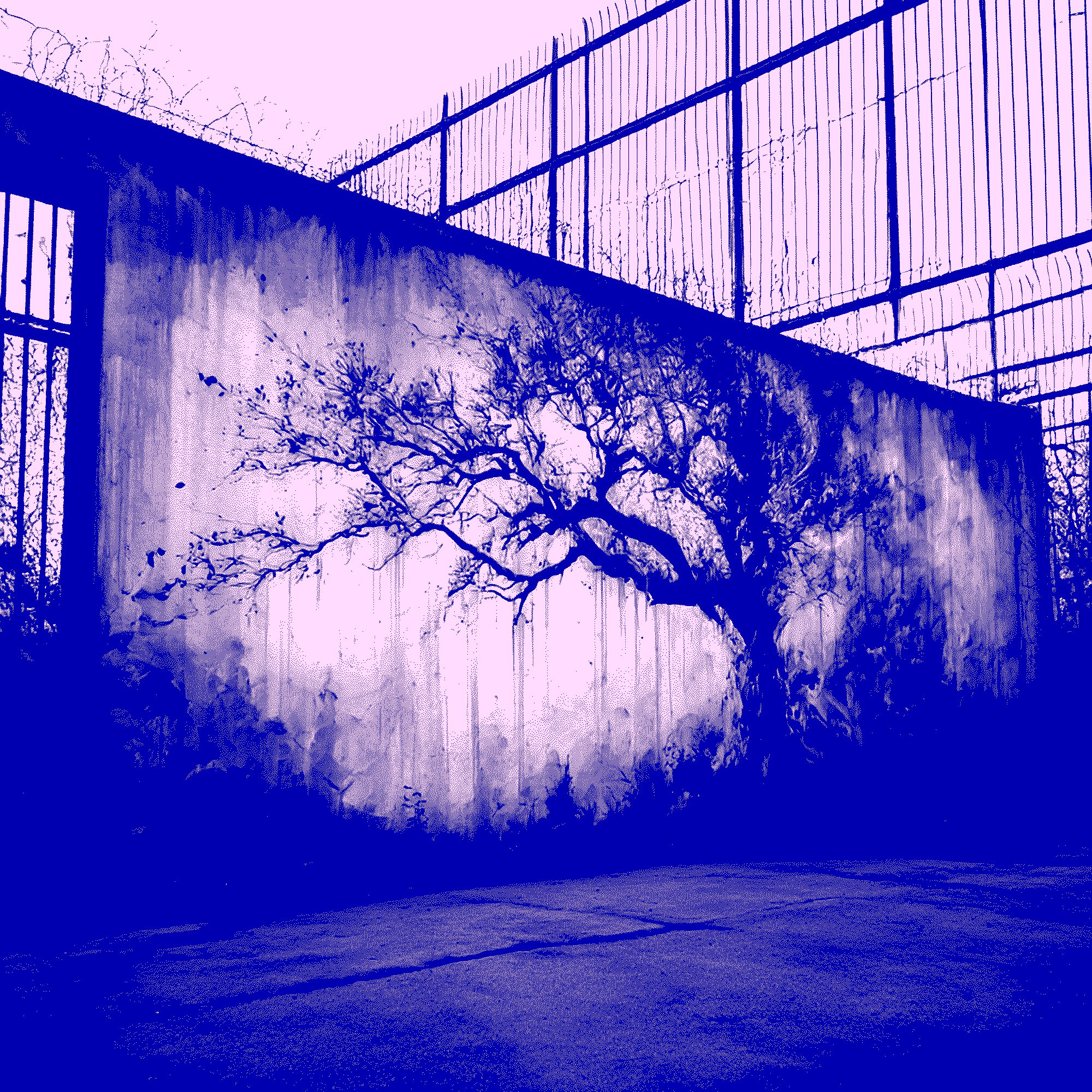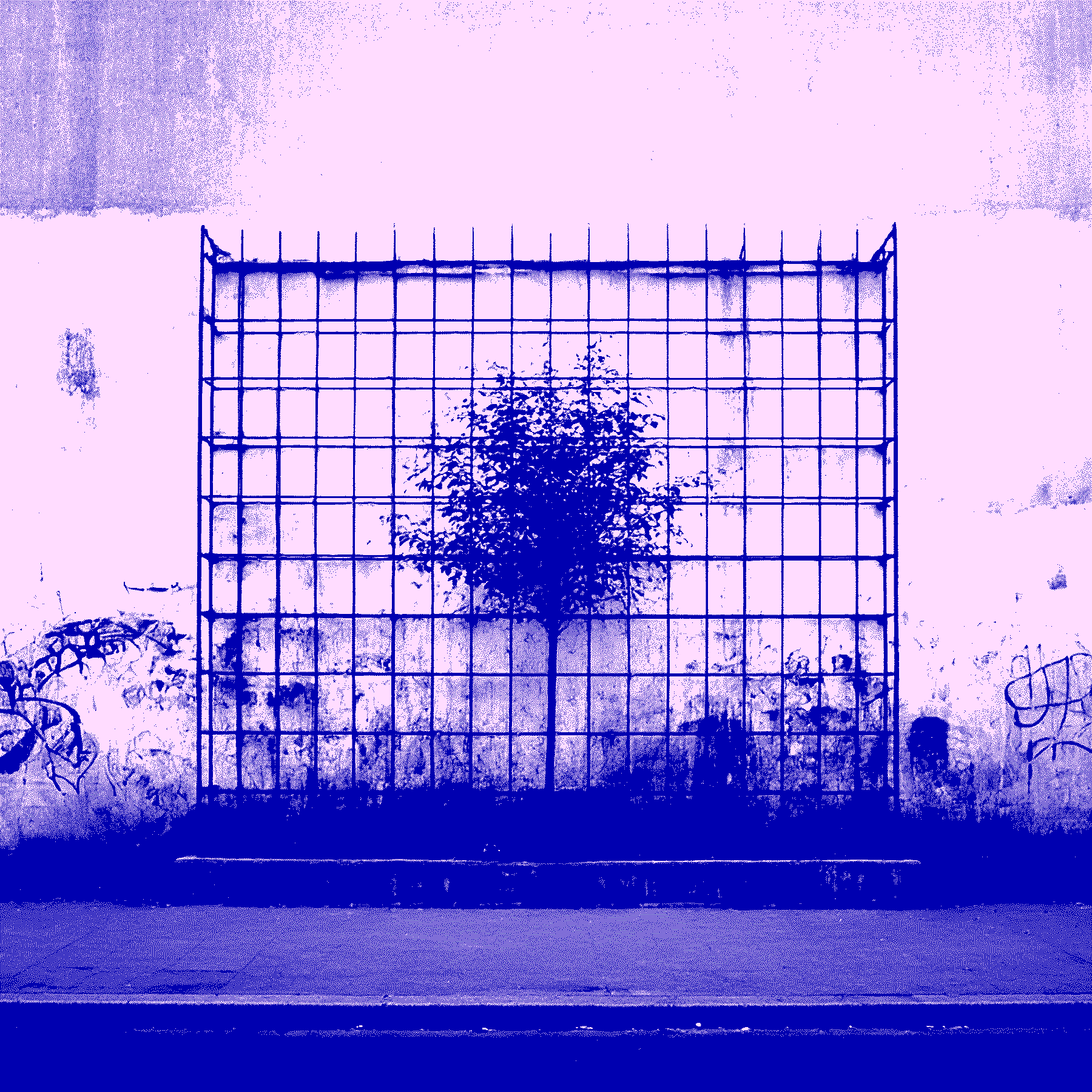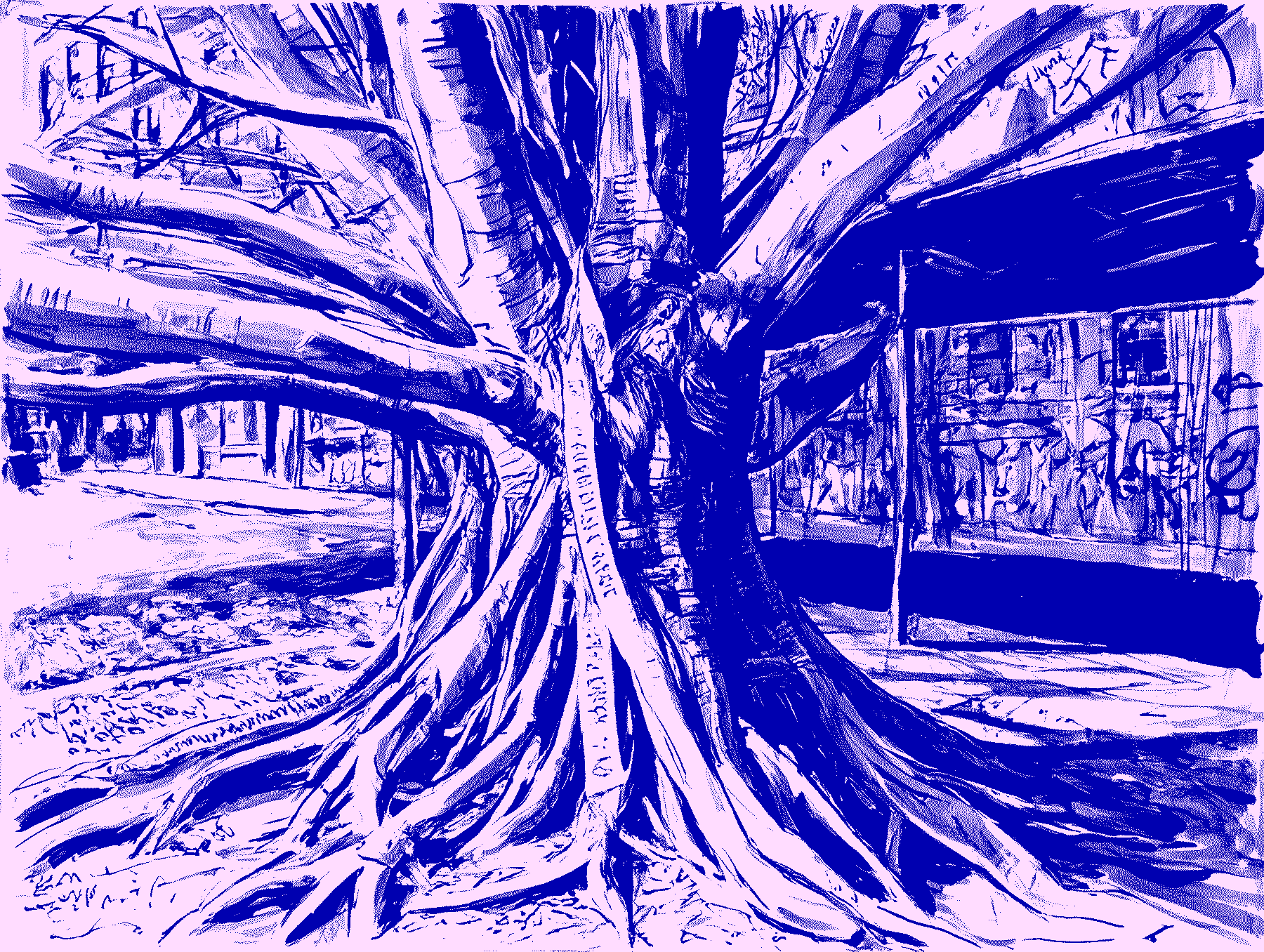Trees AI (Part 1):
What Are Cities Doing to Us?
A conversation between
Sofia Valentini, Chloe Treger and Nathalia Del Moral Fleury
This is Part 1 from a short story series. In this first part, we get to know Chloe and Sofia, we explore city life and its intricate issues, and we consider the concept of well-being as a central indicator of urban success.
If you are not reading this in a city with your windows wide open, or your city is missing trees, we invite you to play this soundscape to set the mood:
“I can feel global warming in my skin.”
— Sofia
Chloe has always been intrigued by dark matter, the invisible forces shaping our lives. “I had a drive for this hidden questioning,” she says, always probing assumptions and imagining alternative futures. She studied mathematics and philosophy, a fulfilling experience, but she eventually missed subjectivity, her body felt unheard by her rational mind. She longed to get back into her embodied emotions.
Living in Paris, Chloe reflected on the subtle ways cities shape our lives. Where London had parks to support mixing, Paris had a riverbank to support intergenerational mixing. These differences fascinated her. One evening, she attended a dinner without expectations. A random conversation with an urbanist changed everything. While hearing about his work, something resonated deep within her. A month later, she applied to UCL to study urban design. Studying and designing cities asked of her to be present, to become aware of how she felt walking down a main road in contrast with a calmer tree-lined back street. She later combined this with the analytics explaining why things are the way they are, fundamentally, and, importantly, where to create space to change that.

Nathalia: So what’s the dream here ?
Sofia: The intention behind city design is often around efficiency, mobility, and economic expansion. But at the same time as accumulating wealth and infrastructure (unevenly) we are also accumulating stress, loneliness, and environmental degradation. The traditional narrative sees urban planning as a cost-benefit equation for economic output, but the planner actually wants to be answering the question: how can we design for life in its varied forms ?
Nathalia: I see, so you think well-being can be the central indicator of urban success?
Chloe: I think it can, and it should, remember the saying “Everything we design in this world, will in turn design us back”? Well if we don’t shift our thinking, we will continue to suffer the effects of our poor designs.
After earning her master’s, Chloe joined Architecture 00. After years of intense work, she took a sabbatical. Something shifted during that time. Climbing in Sardinia, sailing in France, hiking in Cape Town, these experiences grounded her. She wanted more of that in her life, in her work. When she returned, she joined the Trees AI team, who were working really hard to build a platform and working on their first pilot in Glasgow, trying to get a series of urban nature projects off the ground.
Sofia, Chloe’s colleague, lives in São Paulo. “I work exploring and researching cities, but interestingly I don’t want to live in one.” What may seem like a paradox isn’t one, Sofia, who works in city work, feels that she suffocates in São Paulo, a city suffering the abuse of concrete, where air, water, and soil are sacrificed to unchecked development. We cannot live without nature.
As a masterful data expert and deep ecological thinker, Sofia believes the work of Trees AI is inevitable for our ability to thrive. The problem is that cities have optimized for productivity, not livability. We govern as if we don’t need nature, as if we aren’t nature. We need translators and new ways to govern.
The question at the center of our work is “How do we grow quality of life for urban citizens?”

LEE: How else can urban success be measured? What should we value?
As humans, we have evolved differently than the ecosystems we design, or, we have designed overlooking key aspects of our nature. A tension grows between what our financial systems value and what our bodies need. How do we bridge that gap?

The Tree: Aren’t we all nature? Dear neighbour, what’s all the frenzyness about? I do not speak this language of speed. I do not issue quarterly reports; over decades, I provide cooling, carbon capture, and improved air quality among other things. While I don’t track my KPIs to show you, you can trust that I will provide intergenerational care, if only you would let me.
Nathalia: Wait, aren’t cities expected to grow like crazy in the next few decades?
Chloe: Yep. We’re looking at an extra 2.5 billion people living in cities by 2050.
Nathalia: Whoa. That’s a massive shift. We really need to plan for that… So what’s the big risk here?
Chloe: The risk? That we keep building cities that ignore nature. If we don’t change course, we’ll lose even more green space: trees, parks, biodiversity… with some projections seeing 33 million hectares of natural habitat lost (which is the size of Germany or almost 50 million football pitches).* And when nature disappears, so does our resilience.
Nathalia: Resilience as in… what, exactly?
Chloe: Everything. We’re talking about higher stress levels, more heat, more flooding, worse air quality, rising crime, more illness, deeper isolation. Cities will become crisis machines. Constant emergencies, with fewer resources to handle them.
Nathalia: Scary.
Chloe: It is. And part of the problem is that we treat nature like a luxury. Trees? They show up in city budgets as costs. But they’re not just “nice to have” they’re infrastructure. They clean our air, cool our streets, improve mental health and physical health. Time in nature correlates positively with natural killer (NK) cell activity which impacts our immune health. Yet those benefits don’t get factored into financial systems.
Nathalia: So we cut them down to save money…
Chloe: Or to make money, to free up space for development. It’s short-term thinking that costs us way more in the long run. If we fail to change, nature will continue to decrease in cities, and with that our resilience. We will live in a world of constant crisis management. More stress. More road rage. More crime. More sickness. More loneliness. With less resources to manage such a crisis.

The Transformation
Trees AI makes nature visible within financial systems. It equips cities to recognize the full value of urban forests. Initially, Trees AI sought private capital for tree investment. That failed. Investors lacked incentives. Instead, they pivoted to municipalities, helping them become better stewards.
Chloe: So imagine a way to know what a tree does for us humans. Imagine knowing that one tree brings savings in health, in climate regulations, in air quality. Now imagine the collective force of a city’s entire urban forest – this is about shifting from cost management to value creation. Of course, our trees don’t speak in KPIs. And for many, trying to reduce nature to numbers feels opposed to how we should relate to nature, a further bleeding of our numerical obsession with financialising everything. But here’s the reality: if we can’t make the value of nature legible to the systems that govern investment and planning, it simply won’t be prioritized.
They say “you manage what you measure,” and it’s true—we can’t protect what we don’t count. But we also need to remember the counterpoint: not everything that counts can be captured by data. That’s why we need not just metrics, but Life Ennobling Economics. This is about developing the frameworks that let us see trees not as budget lines but as value-generating infrastructure. The return on investing in nature isn’t just financial—it’s multi-capital: ecological, social, cultural. If we get that right, our cities won’t just be greener, they’ll grow our quality of lives.
Yet, resistance remains. Even with data and compelling narratives, cities struggle to prioritize bold action. Cost-management mindsets persist. Developers hesitate. Change is slow.
LEE: This is where transformation meets inertia. Our financial and political systems were built to reward profit and short-term gains. Trees AI is not just introducing a technical tool, it is challenging an entire economic paradigm. How do we move from viewing trees as an expense to seeing them as essential capital? This requires not just data, but a new cultural story about what prosperity means.
Why continue this work if change is so difficult? Because our workshops reveal a profound shift in people. When people are asked to imagine their streets without trees, something happens. The absence speaks louder than any argument.
“I wouldn’t go there.” “I would move.”
Sofia has seen it happen. People wake up to something they already knew, just below the surface of consciousness. Once they see it, they can’t unsee it. They stop taking trees for granted. They realize that nature is not a backdrop, it is a fundamental part of life in the city.
Chloe says “most people love trees, with memories of etching first love’s names into the bark, or learning how to climb or how to fall… deep down, that love of trees is present. But it’s hidden behind a posture, when people put on their institutional hats, or wear their official title, then, they forget…” It seems that the challenge is that we don’t value what our heart knows, as much as what the head does.
LEE: Transformation does not happen through policy alone. It happens through direct experience. The real shift is from passive acceptance of cities as they are, to an active desire to shape them for well-being. In a financial sense, this is the transition from extraction to stewardship.
This is not a choice. It is necessary. For our health. For our cities. For our future.
We’ll explore how this has been tested in Germany, and beyond, and what has been the ripple effect of this work in Part 2 of this short series.
Life-Ennobling Economics Shifts
The Berlin story (from Part 2) is an example of a local climate engagement that becomes a live prototype of systemic transformation, revealing how urban systems can move from extractive logic to a living, relational economy. Through the lens of Life-Ennobling Economics, we can understand the deeper shifts at play.
1. BEYOND PROPERTY
→ FROM OWNERSHIP TO STEWARDSHIP
From centralized control and commodified ownership
To collective stewardship of living urban assets
Urban systems are shifting from viewing trees as liabilities or amenities to recognizing them as shared civic infrastructure, part of a living commons that invites care, not just permission.
Traditional urban governance treats public assets as owned by a central body, managed, sold, or sacrificed based on short-term trade-offs. Trees, in this logic, are liabilities or amenities, not vital living infrastructure.
Shift: The project redefined trees as shared civic assets, with measurable value in cooling, stormwater retention, health, and biodiversity – but so much more. By valuing them not for aesthetic but for service and relational worth, they become part of a commons logic.
Example: When trees were slated for removal for a train extension, the valuation reframed the debate. Instead of analyzing from a cost benefit approach, the community asked: What are we actually losing here? The conversation moved from permission to cut, to shared responsibility to care..
2. BEYOND MONETARY COLONISATION
→ FROM FINANCIAL REDUCTION TO MULTI-VALUE ALIGNMENT
From flattening complex value into financial efficiency
To integrating diverse forms of worth such as social, ecological, and emotional
Urban planning moves beyond cost-led decisions by aligning monetary language with deeper values, making the invisible visible and rebalancing what matters in decision-making.
Modern urban planning often collapses complex value into a single financial metric—usually cost-efficiency. This flattens life into ledger lines.
Shift: In Berlin, TreesAI used monetary language to reveal hidden value. Financial metrics were translated alongside social, ecological, and emotional dimensions to build richer, more resonant cases.
Example: The dashboard showed not just the cost of replacing trees, but the health costs of rising temperatures and infrastructure strain. Suddenly, what felt intangible became visible. Numbers served values, not the other way around.
3. BEYOND GOVERNANCE
→ FROM SILOED INSTITUTIONS TO RELATIONAL GOVERNANCE
From siloed authority and transactional roles
To relational governance rooted in trust and co-creation
Institutions, citizens, and financial actors come into alignment through shared authorship, felt trust, and emotionally intelligent collaboration.
Urban transformation is often constrained by rigid contracts and isolated actors. Institutions with misaligned objectives define responsibilities in narrow terms.
Shift: The Berlin model introduced relational governance: triangulating public services, civic groups, and financial institutions in a mutual learning and alignment process.
Example: A preparatory workshop brought 10 civic leaders into shared authorship. After the Saturday event, relationships deepened. City councilors dropped formalities, began texting, and co-exploring. A new governance texture emerged: informal yet effective, emotional yet grounded, capable of navigating complexity together.
4. BEYOND EXTRACTION
→ FROM DEPLETION TO REGENERATION
From displacement and compensatory logic
To regeneration that honors place-based interconnection.
Nature is no longer treated as interchangeable or expendable. Instead, care becomes local, specific, and temporal, centering relationships, resilience, and ecological memory.
Cities often treat nature as something to be cleared or compensated for, removed in one area, replanted in another. The underlying logic is one of generalization and displacement, not context-specific regeneration. The financial market recognizes that geographical context makes something more or less valuable, an apartment downtown will be more expensive than a similar one far in the suburbs for example. How come that doesn’t apply to trees ?
Shift: The work recognized that trees are not interchangeable—they are rooted in community. The loss of mature trees in one neighborhood cannot be offset with saplings elsewhere. Ecological services and emotional bonds are spatially and temporally bound.
Example: The train extension case revealed this clearly. The real cost of cutting was about interconnected benefits: to cooling shade, to clean air, and resilience against climate change. Replanting elsewhere did not regenerate the lost ecology of care for that specific area.
